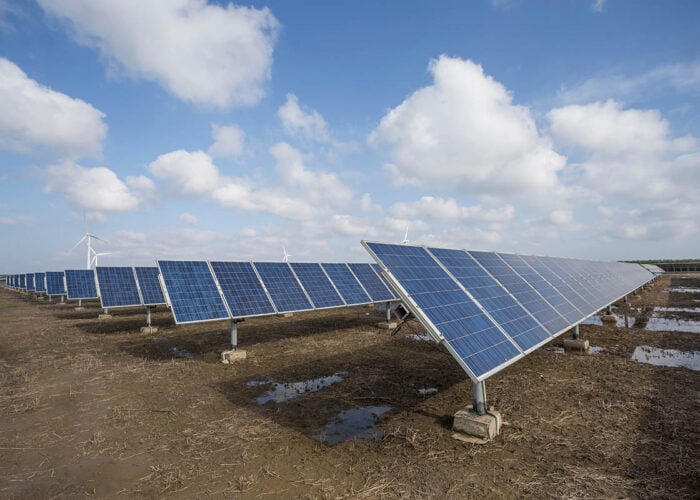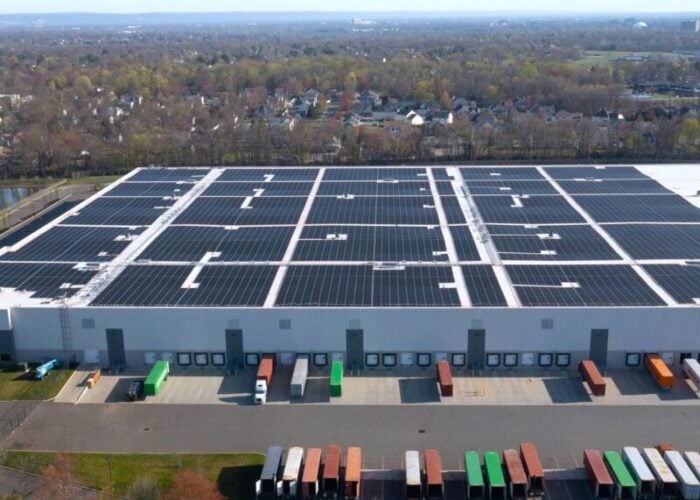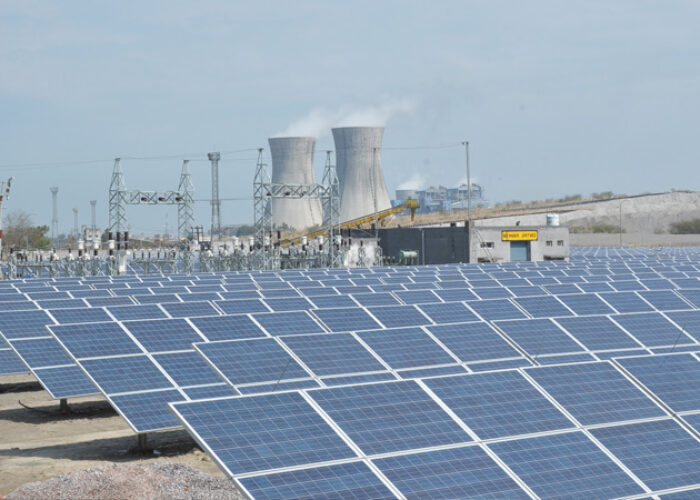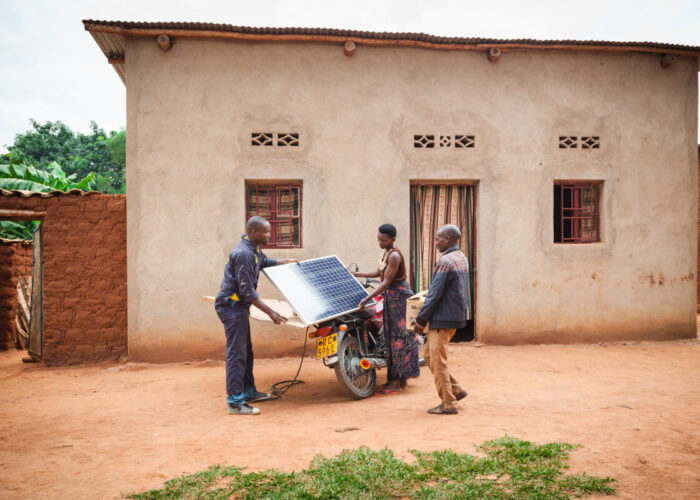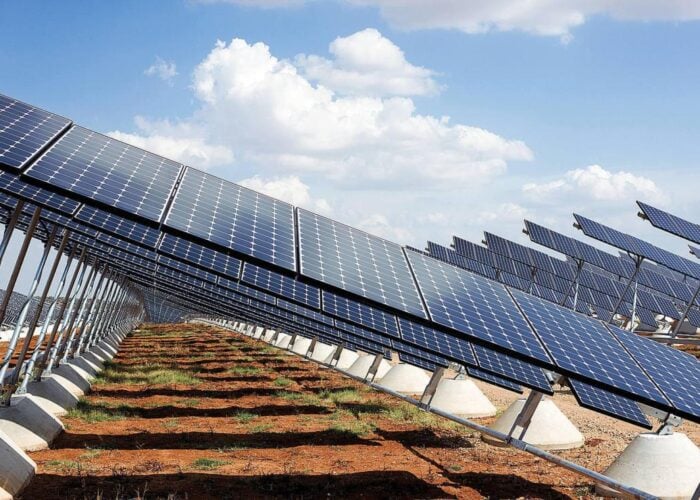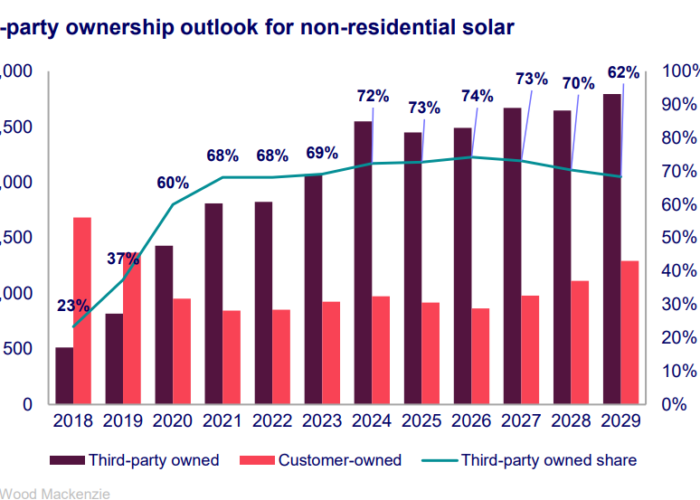
Liam Stoker reports from the halls of COP26, where the likes of US energy secretary Jennifer Granholm have highlighted the need for an all-encompassing but just and equitable energy transition, and explores the role for solar PV.
At an event such as COP26 where the fate of the world is, quite literally, up for discussion, it’s easy to be consumed by the bigger picture. The world simply must limit global warning to a maximum of 1.5 degrees Celsius by 2050 or, for billions of people, its climate will become unliveable. To achieve this, national governments must set aside their differences and mobilise trillions upon trillions of dollars to clean up a patchwork of economic sectors, all whilst bringing the global population along too.
Unlock unlimited access for 12 whole months of distinctive global analysis
Photovoltaics International is now included.
- Regular insight and analysis of the industry’s biggest developments
- In-depth interviews with the industry’s leading figures
- Unlimited digital access to the PV Tech Power journal catalogue
- Unlimited digital access to the Photovoltaics International journal catalogue
- Access to more than 1,000 technical papers
- Discounts on Solar Media’s portfolio of events, in-person and virtual
So far, so straightforward, right?
That much is made acutely evident on the floor of the Scottish Event Campus, which gives its halls, atriums, meeting rooms and otherwise repurposed offices and floorspace to a delegation numbering in the tens of thousands for the summit, which opened on 31 October 2021 and closes on Friday (12 November 2021).
Every person there – well, perhaps not the hundreds of those present representing fossil fuel interests – is intent on achieving just that. As a result, there’s a palpable hustle and bustle about the COP, undampened by the extensive queuing and security procedures necessary or the Glasgow chill. Tens of thousands of people of disparate backgrounds – economists, financiers and politicians rubbing shoulders with climate activists, representatives of indigenous communities and precocious schoolchildren – assembled under one roof multiple rooves, united by one common cause (not, as the case may be, a newfound affection of Irn Bru).
One critical area that was discussed repeatedly on last week’s ‘Energy Day’, held on 4 November, was the insistence that any transition must be just and equitable. This is, again, a point easily forgotten amidst a flurry of big picture announcements regarding renewables and bids to consign coal to the history books, but one that is absolutely crucial to an energy transition that brings along the public en masse.
Speaking during Energy Day’s opening plenary session, Damilola Ogunbiyi, special representative of the UN secretary-general and chief executive at non-profit Sustainable Energy for All, used her comments to highlight just that, indicating the need for established economies to listen to its partners in the developing world and aid them in prioritising their energy transition.
Whether or not that comment was heard by the watching UK energy secretary Kwasi Kwarteng, whose government last month confirmed cuts to foreign aid – which also supports renewables projects in developing nations – will remain in place for at least another three years, is unclear.
Ogunbiyi’s sentiment was, however, certainly heard and indeed echoed by others speaking on the plenary. Mafalda Duarte, CEO at multilateral climate funding Climate Investment Funds, stressed the need for emerging economies to be supported in phasing out coal and replacing it with renewables.
Likewise Laurence Tubiana, who heads up the European Climate Foundation, spoke of the “profound transformation we face”, with a need to invest in key technologies but also to focus on job creation that is just and fair. Europe, Tubiana said, had so far failed in this regard. “We are learning… in Europe, we’ve had triumphs but missteps too,” she said, claiming that utilities had been overpaid to end coal consumption, while at-risk communities had been overlooked.
But it was Jennifer Granholm, the US energy secretary, that was perhaps the most punchy of the panel. Starting by establishing two “inescapable facts” – the need to cut emissions and meet the growing energy needs of populations – Granholm said those details underpinned the need to build out as much clean, dispatchable and affordable power generation as possible in as many locations as possible. “[US President] Biden’s Build Back Better agenda will see a shift towards clean energy as an economic opportunity for communities of all kinds, including those to have been disproportionately affected by legacy systems,” she said, clearly implicating the damage wrought by fossil fuel industries the world over.
Granholm closed her comments by stressing her appreciation that the Energy Transition Council, established by the UK government in the build-up to COP26 with the aim of aiding the shift from coal to cleaner, more sustainable energy solutions, “recognises that there are real humans” behind such a shift, including “fossil fuel workers that have powered nations for the last 100 years, who could power the next 100 years, but in clean energy”.
“There’s a sensitivity with humans who need to be brought along [and] be seen not as victims, but victors. The challenge is great, but the opportunity is greater,” Granholm said.
This will be no simple or straightforward task. Energy, as a key commodity, relies intensely on the flow of capital to finance its development, and the finance community has an inherent ability and preference to pick winners. It’s why capital has flowed to solar markets supported by subsidies and then onto jurisdictions with the most favourable policy environments, irradiance profiles and levelised cost of electricity (LCOE).
The system therefore faces the daunting prospect of rewiring itself to include support for programmes that benefit communities and emerging economies alike, whether that be fuelling the continued growth of off-grid and pay-as-you-go solar in rural Africa, supporting community solar installs that benefit low-income families or retraining workers displaced by the transition in renewable fields.
As Granholm suggests, this will be no mean feat. But the opportunity at hand – to revolutionise access to electricity in the developing world, to help millions out of fuel poverty at a time when power prices are spiking, to create millions of green, sustainable and skilled jobs the world over – is significantly greater. And each of those communities or individuals helped will be making an albeit small, but tangible and worthwhile contribution to the cause.
All it requires is the combined efforts of a few hundred policymakers and the pressure of tens of thousands of delegates, hopeful – or expectant – of change. COP26 may be an event drawn to the bigger picture, but it’s the smaller details that will determine the scale of its success.

